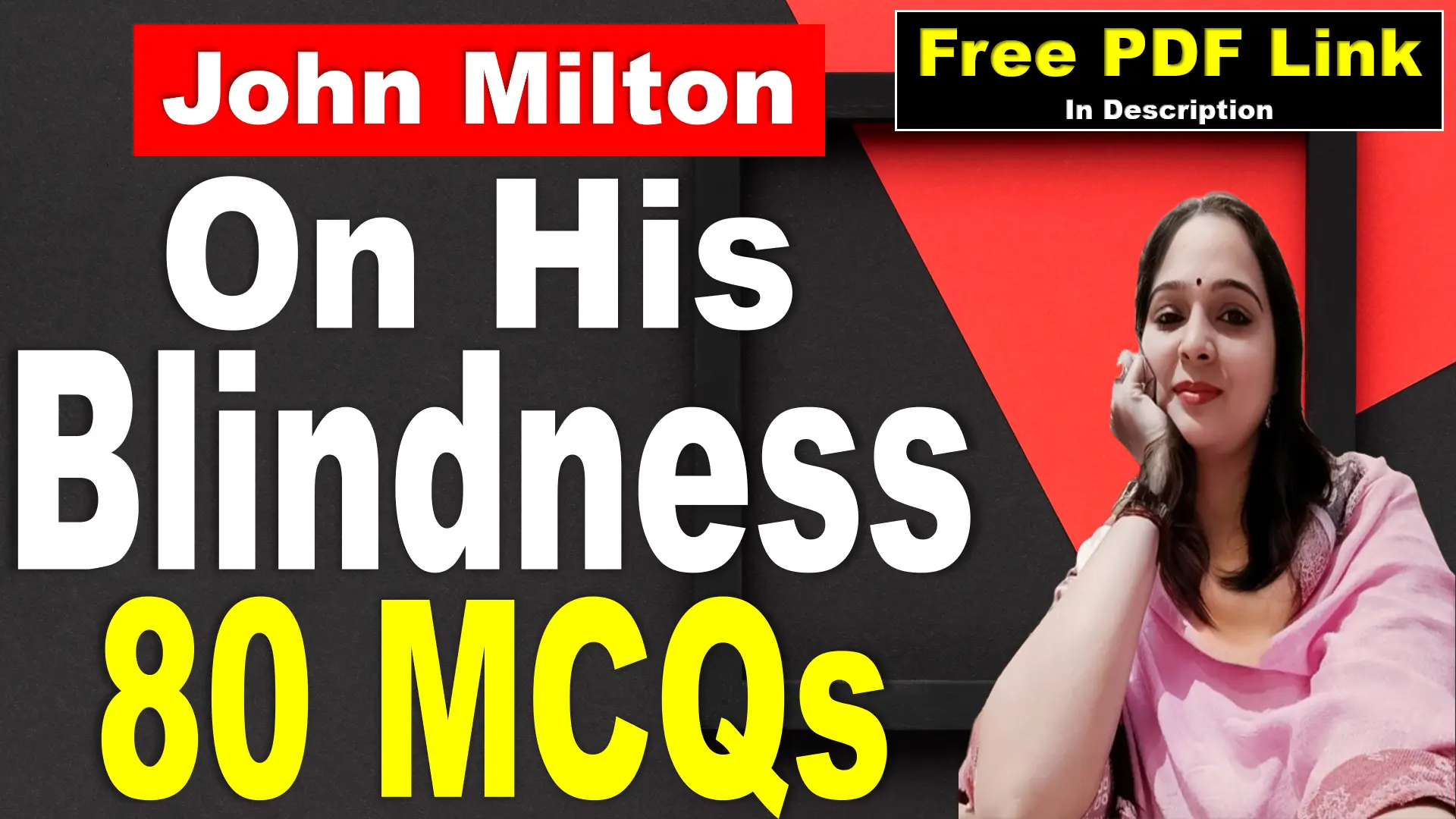
Essay Type Questions
Write the critical appreciation of the poem.
Introduction
William Wordsworth’s poem The World Is Too Much With Us expresses deep feelings about how people have become disconnected from nature. Written during the Romantic period, it reflects the worries of many writers who saw the negative effects of industrialization and materialism on the human spirit. Wordsworth emphasizes the importance of nature, imagination, and spirituality, urging readers to reconnect with the natural world.
Central Idea
The central idea of the poem is about how humans have lost touch with nature due to an overwhelming focus on money and possessions. Wordsworth feels sad that in our pursuit of “getting and spending,” we have forgotten to appreciate the beauty and wisdom of nature. He conveys a strong sense of urgency and longing for a return to a more harmonious relationship with the natural world, suggesting that this connection is vital for our happiness.
Structure & Rhyme Scheme
The poem is a Petrarchan sonnet, consisting of 14 lines written in iambic pentameter. The rhyme scheme is ABBAABBA for the octave and CDCDCD for the sestet. This structure allows Wordsworth to present a problem or argument in the octave and then reflect on or resolve it in the sestet. The strict form of the sonnet contrasts with the free-flowing content, emphasizing the tension between the constraints of modern life and the freedom of nature.
Theme
The poem explores several themes, including:
Disconnection from Nature: Wordsworth highlights how modern life has led to a loss of connection with nature.
Materialism: The obsession with wealth is criticized, showing the emptiness it brings.
Longing for Spiritual Connection: The speaker expresses a deep desire for a spiritual bond with nature, as seen in mythological references.
Nostalgia for Simplicity: The poem conveys a longing for a simpler life in harmony with nature.
Critique of Industrialization: Wordsworth warns about the negative effects of industrial progress on the environment and human spirit.
Style
Wordsworth’s style in this poem is characterized by vivid imagery, personification, and allusions to mythology. He uses simple, clear language to convey profound ideas and emotions, making his poetry accessible and relatable. The use of everyday language reflects Wordsworth’s belief that poetry should be a spontaneous overflow of powerful feelings. His lyrical and evocative style draws the reader into his emotional response to the natural world.
Poetic Devices
Wordsworth employs various poetic devices to enhance the poem’s meaning and impact. These include alliteration (“bares her bosom”), personification (the sea baring “her bosom to the moon”), and imagery (vivid descriptions of nature). He also uses similes (“up-gathered now like sleeping flowers”), metaphors (“we are out of tune”), and oxymorons (“sordid boon”). Anaphora is evident in the repetition of “Have” at the beginning of successive lines, and allusions to mythological figures like Proteus and Triton add depth to the poem.
Critical Commentary
Critics have praised The World Is Too Much With Us for its strong critique of modern society and its call for a spiritual connection with nature. Scholar M.H. Abrams notes that the poem reflects Wordsworth’s belief in nature as a source of moral guidance. Similarly, critic David Perkins highlights the poem’s emotional depth and the speaker’s urgent plea for a return to nature. Other scholars see the poem as an early work that sets the stage for later discussions about the environment.
Message
The poem conveys a strong message about the need to reconnect with nature in a world focused on materialism. Wordsworth urges readers to reflect on their values and consider the effects of industrialization on their lives. By encouraging a deeper appreciation for nature, he suggests that true happiness comes from harmony with the natural world, rather than from wealth and possessions. The poem serves as a reminder of the importance of nurturing our connection with the environment for our own well-being.
Conclusion
The World Is Too Much With Us is one of Wordsworth’s most important works, capturing the spirit of Romanticism through its themes, style, and poetic devices. The poem’s exploration of humanity’s disconnection from nature, critique of materialism, and longing for spiritual fulfillment resonate with readers today. Wordsworth’s effective use of language and structure creates a poignant reflection on the need to connect with nature, making this poem timeless and relevant. Through this work, Wordsworth critiques society while inviting us to rethink our relationship with nature for a more meaningful life.
Long note on themes used in the poem “The World Is Too Much With Us”
William Wordsworth’s poem The World Is Too Much With Us encompasses several profound themes that reflect his concerns about the modern human condition, particularly regarding the relationship between humanity and nature.
1. Disconnection from Nature
The poem shows how people today have lost their connection with nature. Wordsworth feels sad that modern life focuses so much on money and possessions that we forget to appreciate the beauty of the natural world. He believes that this disconnection takes away from our happiness and well-being.
2. Materialism and Its Consequences
Wordsworth criticizes the obsession with material wealth, suggesting that while having money and things might seem good, it can actually be harmful. He describes this materialism as a “sordid boon,” meaning that it can lead to moral corruption and emotional emptiness. Instead of finding joy, people become unhappy and disconnected from what truly matters.
3. Longing for Spiritual Connection
The speaker expresses a deep desire to reconnect with nature on a spiritual level. Wordsworth refers to mythological figures like Proteus and Triton, which represent a time when people respected and revered nature. This longing suggests that nature can offer wisdom and peace, which are missing in the hectic modern world.
4. Nostalgia for Simplicity
The poem conveys a sense of nostalgia for a simpler way of life, where people lived more closely with nature. The speaker wishes for a time when humanity appreciated the natural world instead of being caught up in the complexities of modern life. This yearning reflects a desire to return to a more natural and uncomplicated existence.
5. The Role of Imagination
Imagination is important in Wordsworth’s poetry. In this poem, the speaker believes that imagination helps people connect with the beauty of nature. The longing for “glimpses” of nature’s wonder shows that Wordsworth thinks imagination is key to experiencing the deeper meanings of life, especially in a world that often focuses only on facts and material things.
6. Critique of Industrialization
The poem criticizes the rapid industrialization of Wordsworth’s time. The speaker is concerned that the focus on industrial progress has harmed both nature and the human spirit. Wordsworth warns that by prioritizing material wealth and production, we risk losing the appreciation for the simple joys and wisdom that nature offers.
Conclusion
In The World Is Too Much With Us, Wordsworth shares his worries about how modern life affects our relationship with nature. The themes of disconnection from nature, criticism of materialism, longing for spiritual connection, nostalgia for simplicity, the importance of imagination, and critique of industrialization all come together to send a powerful message. Wordsworth encourages readers to reflect on their values and to reconnect with nature for a happier and more meaningful life.





